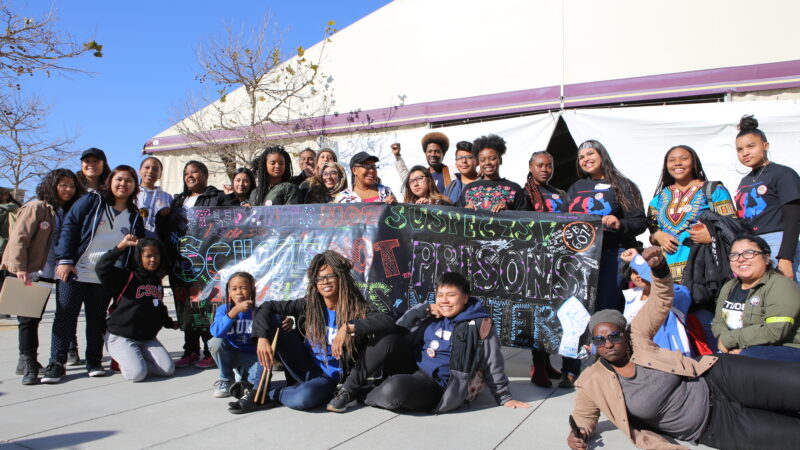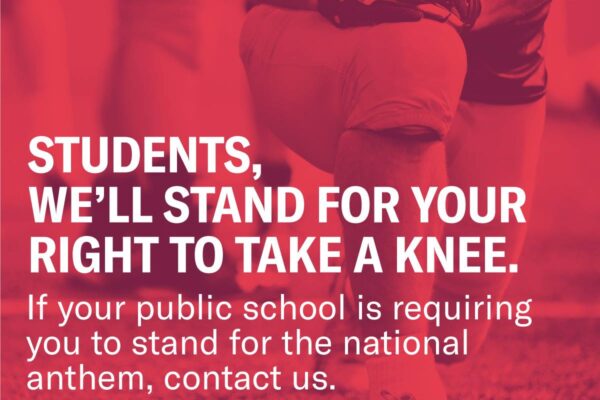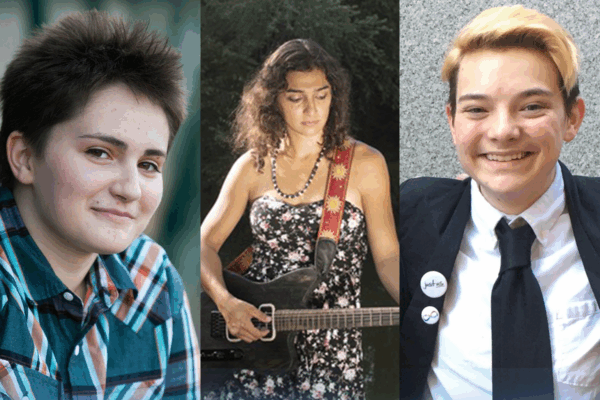Education Equity

What you need to know
More than 40%
of 136 school districts in SoCal are illegally spending tens of millions of $ on police & surveillance instead of spending the money to improve the learning outcomes of high need students, such as low-income youth, foster youth, English Learners.
$66.67 million
In 2019-20, LAUSD budgeted at least $66.67M for school police who criminalize students & harm school climate, more than the $15.49M the district budgeted to support English Learners or the $47.56M the district budgeted for student health personnel.
The ACLU of Southern California protects the constitutional rights of all students to equal educational opportunity. We focus on ensuring that the public education system provides the right to an equal education to all students, including those who have historically been marginalized and underresourced by the public school system, such as students of color, LGBTQ youth, and low-income youth, and that all decisions are centered on student need and success.
We work to ensure that:
- California provides enough funding for schools to allow students to thrive, including by supporting the Schools and Communities First Initiative;
- School districts make funding decisions that equitably distribute funds and provide the types of services and resources, such as school-based mental health resources and social-emotional learning programs, that actually improve outcomes for students. For example, we help ensure that districts provide services to high-need students through California’s Local Control Funding Formula and make spending decisions with transparency and accountability. In another example, our “Counselors Not Cops” campaign advocates to provide every student with access to a full team of mental health professionals, like school counselors, social workers, psychologists, and nurses and our Right to Resources report highlights how districts illegally spend funds meant to support high need students on police and surveillance in schools.
- All California students have complete access to a high-quality arts education, which will provide students with a creative outlet, allow them to develop skills, keep them engaged in school, and help them succeed in college and career. Arts education is one of the three areas highlighted in our Ed Justice tool. We created this tool for community members and stakeholders to investigate resource gaps and inequalities, learn about and defend student rights, demand investment and accountability, and engage with different campaigns. Click the third tab in the tool to explore art inequalities by race, income, or school type (charter, continuation, juvenile court, alternative.). Search by district or school and view student-to-art teacher ratios as well.
- Schools remove law enforcement, including permanent police, from school campuses, reduce the use of exclusionary and punitive practices and policies that push low-income students of color and students with disabilities out of school and into the school-to-prison/deportation pipeline, and promote resource-based alternatives that keep students in school and on track to graduate, such as Positive Behavior Interventions and Supports, restorative justice, and trauma-informed practices.
- Students in Los Angeles County build student power through our Youth Liberty Squad, our youth leadership group that champions civil rights and civil liberties.
- Students know their rights in school through our My School, My Rights website.
We created our Ed Justice tool for community members and stakeholders to investigate resource gaps and inequalities across three core areas of work. These areas include school-based mental health, school discipline, and arts justice. Use this tool to explore schools with cops and no counselor, disproportionate arrests and suspensions, or schools offering inadequate arts education.
The Latest

Students Have the Right to Take a Knee
Cases, Campaigns & Legislation
Community Coalition v. Los Angeles Unified School District
Stay Informed
Sign up to be the first to hear about how to take action.
By completing this form, I agree to receive occasional emails per the terms of the ACLU’s privacy statement.
By completing this form, I agree to receive occasional emails per the terms of the ACLU’s privacy statement.


